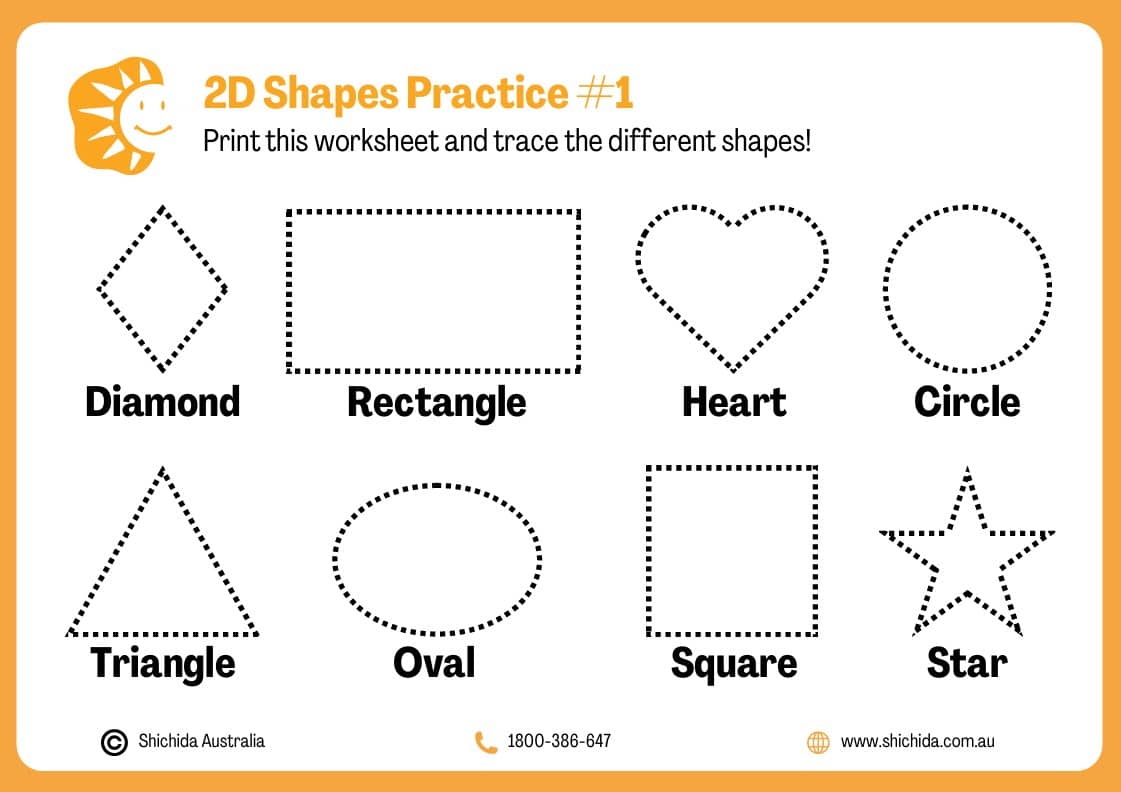Explore Early Geometry with Our 2D Shapes Practice Worksheets
Introduce your little learner to basic geometric shapes. By tracing and colouring these shapes, your child will recognise various forms, enhance their fine motor skills and cognitive development, setting a strong foundation for more complex mathematical learning.
Benefits of Exploring 2D Shapes
Building a Strong Foundation in Early Maths: Children who explore shapes engage in more than basic recognition. They discover how different shapes interact and connect, laying the groundwork for complex mathematical structures and concepts. This early grasp of geometry equips them with the foundational knowledge needed for advanced mathematical understanding as they progress in their education.
Enhances Visual-Spatial Skills: Recognising and playing with shapes helps kids see how things fit together in the world around them. This is important for fun activities like puzzles and real-life skills, like reading maps or figuring out how to organise their room. It helps them make sense of spaces and distances, and this enhanced spatial awareness is also invaluable for later activities.
Develops Fine Motor Precision: Activities such as tracing and colouring shapes are crucial for improving hand-eye coordination. These tasks help children develop the fine motor skills required for a range of future educational tasks, including writing, using scissors, and assembling small objects. Regular practice with these activities strengthens the small muscles in their hands and fingers, enhancing their dexterity and control.
Teaches Categorisation Skills: When kids sort shapes, they learn to group things. This helps them see patterns and organise their world, from sorting their toys to grouping colours in a drawing. It’s a fun way for them to develop critical thinking and problem-solving skills, making sense of the world around them in a natural and enjoyable way.
Continued Learning
- Point Out Shapes Around You: Make learning a part of everyday life by identifying shapes in the environment. Ask your child to find shapes in different settings to deepen their understanding.
- Shape-Based Play: Use toys and games that incorporate various shapes. Describe and discuss these shapes during play to integrate learning smoothly into fun activities.
- Creative Projects: Engage your child in arts and crafts that involve shapes. Making collages or assembling shape-based puzzles reinforces their knowledge in a tactile and visual way.
Spending time on these worksheets with your child is an excellent way to build a strong relationship while supporting their educational growth. Each session of guided activity not only boosts their confidence but also enhances their love for learning.
Download the ‘2D Shapes Practice’ worksheets today and start a rewarding exploration of geometry that educates and entertains.
At Shichida Australia, our classes are crafted to complement your at-home learning efforts. Our play-and-learn approach ensures that children learn and apply their knowledge in interactive and enjoyable ways. Join us for a trial class to experience our supportive and enriching educational environment where both children and parents are valued members of our learning community.
